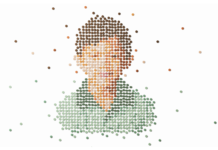Many recent studies have found that children are significantly more likely to be diagnosed with ADHD if they are younger than their peers in their classroom, known as the relative age effect. A recent article, published in Pedagogy, Culture & Society, discusses the implications of the relative age effect findings. The lead author, Athanasios Koutsoklenis at St. Luke’s Hospital in Panorama, Thessaloniki, Greece, working with Finnish researchers Juho Honkasilta and Kristiina Brunila, reviewed 14 studies testing this effect across 11 different countries.
The relative-age effect, seen when children are younger when compared to their peers in the same grade in school, occurs because school-year cutoffs are based on when children are born. For instance, children born in January might be in a class with children born in December of the same year, making them 11 months younger. In early childhood, 11 months is a long developmental period, making some children likely to be at an earlier stage of development while their peers are more cognitively developed.

The studies reviewed in this article came from 11 different countries, all over the world. 12 of the studies found that children of younger relative age were more likely to receive the ADHD diagnosis, while 2 of the studies did not find an effect. Of those that didn’t find an effect, one took place in Denmark—where the authors note, parents of relatively younger children often delay their school start until the next year, preventing exactly this sort of problem. The other study found that—although diagnosis rates did not differ—younger children were more likely to score lower on ADHD scales. This study also sampled from existing study populations, rather than conducting new recruitment, which could bias results.
The authors then looked at the reasons given for this effect in reports of these 14 studies. There were four explanations, some of which are mutually exclusive.
- The diagnosis of ADHD is based on how children act and appear in particular settings, such as school, relative to their peers. Thus, the diagnosis may be mistakenly applied because of confusion over the developmental level. Alternatively, the diagnostic category itself may be invalid because it describes only relative developmental immaturity.
- Entering school at an earlier age may trigger ADHD symptoms. The challenge of being at an earlier developmental level creates an opportunity for a biological “ADHD” to impact the child’s behavior in the social world.
- The converse of the second explanation: entering school at an older age may mask ADHD symptoms.
- The physical environment (such as pollution or weather effects) may be significantly different between December and January, and these effects are responsible for children developing ADHD at a far higher rate.
The second and third explanations require the existence of a biological construct called ADHD, which might never affect a child’s life at all unless it is triggered by environmental challenges that place children at relatively younger or older developmental stages. These explanations are overly complicated and relatively unsupported by evidence (as there is still no biological test for ADHD, and neurobiological differences are controversial in the scientific literature). These explanations still require the social environment and relative age to cause the behaviors called ADHD, but they also require belief in a layer of hidden, undetectable biological difference to explain the existence of a subjective construct.
The fourth explanation requires the assumption that there may be a large difference between environments in different months and that this different consistently impactful across different geographical locations.
Occam’s razor is a principle dictating that a scientific theory that can account for everything in the model with the fewest assumptions is the best explanation. A high proportion of assumptions are involved in the last three explanations, while the first requires fewer assumptions. Thus, Occam’s razor and the scientific tradition support the first explanation: that ADHD is a social construct and children at a younger developmental age are given that diagnosis to explain their difference.
Koutsoklenis and co-authors then further investigate the implications of this explanation for the diagnosis of ADHD. Primarily, they focus on the use of diagnosis to medicalize children’s developmental stage: to turn a contextual, social issue into individual “illness” that can be controlled via medication.
However, the authors write that conceptualizing children’s developmental level as an illness serves a purpose for children and their families. Through diagnosis, children receive educational support at school, make sense of their differences from peers, and blame is shifted away from parenting and onto the individual child’s biology.
The authors write that this “reveals more about the way schools function in contemporary Western societies than about the students diagnosed with ADHD.”
****
Koutsoklenis, A., Honkasilta, J., & Brunila, K. (2019). Reviewing and reframing the influence of relative age on ADHD diagnosis: beyond individual psycho(patho)logy. Pedagogy, Culture & Society. doi: 10.1080/14681366.2019.1624599 (Link)















“conceptualizing children’s developmental level as an illness serves a purpose for” “mental health” workers, teachers, parents, and the schools. “Through diagnosis, children” are stigmatized, have “their differences from peers” pointed out and magnified, “and blame is shifted away from parenting and onto the individual child’s biology” [without any scientific evidence whatsoever].
The “mental health” workers profit from stigmatizing children, since that’s their job. The teachers benefit because drugging the children tranquilizes, thus quiets and stills, the children. The parents benefit because all “blame” is laid on the children. And the schools profit because the government gives them extra money for each “mentally ill”/stigmatized child.
“conceptualizing children’s developmental level as an illness” – turning “a contextual, social issue into individual ‘illness'” – is medicalizing normal human behavior, abuse of power, child abuse, and morally repugnant.
This “reveals” that “the way schools function in contemporary Western societies” is dysfunctional. Get the child stigmatizers and child drug pushers out of our schools.
Report comment
Well, of the four proposed theories, the first is the most plausible. Of course, it will be ignored, as it provides pharmaceutical companies no opportunity to push their in-house speed formulation(s) on parents.
Report comment
I think we have all known this, herd mentality is normative. Go along with it, or get labeled with ADHD, Asperger’s, or Autism.
Report comment
Way to get complex about it, researchers. The explanation is both simple and obvious: ADHD is diagnosed based on the degree to which the child creates problems for the teacher. Younger kids are more likely to create problems for the teacher, and are therefore more likely to get a referral or pressure to get diagnosed and “medicated.” The other explanations (2-4) are clearly just attempts to rationalize continuing to drug kids because they are annoying.
Report comment
A DISCUSSION REGARDING THE
EVOLUTION OF A SOCIAL
MOVEMENT
by
Philip A. Kumin
For anyone privy to the dynamics of the discussion surrounding the manifest destiny of the mental patients’ movement one thing is clear; those founding activists who survive are aggrieved at the loss of their native movement. In almost any venue in which these activists air their grievances, there is an aggregate atmosphere of nostalgia and bitterness. The perceived loss of vitality of this movement of the 1970’s is mourned. For sure, that decade was a landscape fertile for the launching of social movements, including one of deinstitutionalized and disgruntled mental patients. What then comes next?
If the psychiatric inmates’ movement was new, raw, and vital back then, it is diverse and modern today. Inevitably, and of necessity, the ranks of this movement have swelled and the exteriors of 1960’s and ’70’ s radicalisms have dissipated. This evolution does not preclude authenticity, however. It was exciting to be in the midst of a new, moral imperative which fired activists to a frenzy, and it can be this way again. What I’m saying here is that the appeal of ex-inmate activism had at least as much to do with the era in which it occurred as it did the substance of the grievances.
To clarify things even further, when we talk about the vitality of the patients’ movement in the 1970’s what comes to mind is the rage with which activists delineated their complaints. These complaints were intertwined with styles of protest popular in the 1970’s, styles which have changed since then. It may be that surviving veteran activists mistake differences in style for a dearth of fervor on the part of today’s generation of antipsychiatry activists. I don’t believe this to be true at all as the mental health system of today revolves just as tightly around the flawed medical model paradigm as it was doing in the 1970’s. Patients unquestionably continue to suffer.
In 1978, activist Judi Chamberlin wrote her book, On Our Own: Patient Controlled Alternatives to the Mental Health System. The book articulated and codified the philosophies of the mental patients’ movement and became, in effect, a bible thereafter. In 2019, we are seeing embellishments and implementations of the blueprint therein.
One such development has sprung from the fact that in contrast to the 1970’s, it is now more practical for mental patients to attend school and acquire college educations. Indeed, there is a growing pool of graduates who are former inmates. From the antipsychiatry movement’s point of view, it’s also an established fact that the results of any scientific studies dealing with mental health issues which are conducted by researchers who are not themselves former patients, are skewed in favor of the Establishmentarian medical model point of view. Because those researchers have a lot of academic credentialing and respectability, what they announce is instantly believed and accepted by the public.
Former inmate, Dr. Nev Jones, a researcher at the University of South Florida, is one such beneficiary of the new access to an academic life for former mental patients. Dr. Jones is now spearheading an effort to encourage other patients who are considering grad school to become researchers too. The intent of this plan is to accrue a pool of researchers who are former patients, who will then counter the opportunistic distortions of non-patient researchers.
Report comment